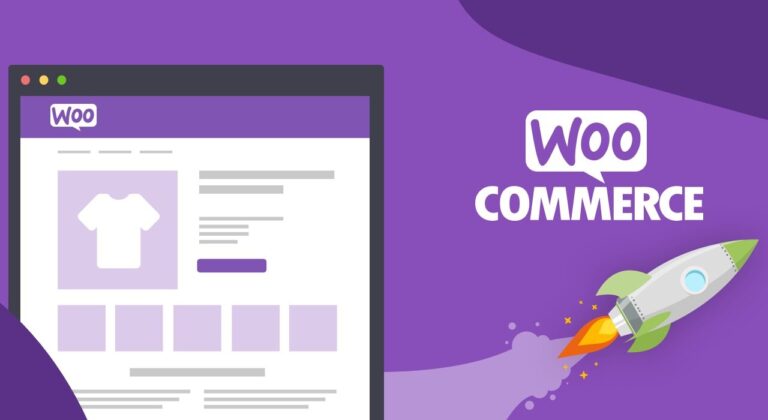Adobe Commerce, formerly known as Magento, is an outstanding e-commerce solution that caters to the needs of medium-sized and enterprise-level businesses. With over 160,000 websites hosted on this platform, including leading brands like HP and Food Service Direct, it has proven to be a reliable choice for businesses of all sizes. Its highly customizable and flexible nature, coupled with its scalability, makes it an excellent option for businesses looking to create unique and personalized customer experiences.
The Good and Bad of Adobe Commerce
Like all e-commerce platforms, Adobe Commerce has its strengths and areas for improvement. While certain tasks are executed exceptionally well on this platform, there are other features and offerings that could benefit from refinement. Below, we’ll take a closer look at both the best and not-so-good aspects of Adobe Commerce, providing a balanced overview of its capabilities.
What Makes Adobe Commerce Good?
Adobe Commerce offers an impressive range of features that make it a standout e-commerce platform. For starters, the platform is highly scalable and comes equipped with powerful integrations. With over 3,600 native integrations available on the Adobe Marketplace, you’ll be able to extend your store’s functionality with ease. These integrations span categories like marketing, payments, security, customer support, site optimization, and shipping and fulfillment, many of which are available for free.
One such extension is the Amazon Sales Channel, which allows you to automate and synchronize Amazon catalogs and order data, manage listings, maintain orders and inventory, and implement pricing rules from your Adobe Commerce dashboard – all at no cost.
In addition to powerful integrations, Adobe Commerce also supports multi-channel commerce, allowing you to sell your products through multiple channels, including online and brick-and-mortar businesses. The platform is designed to work for both B2B and B2C stores, and you can manage both types of businesses simultaneously on a unified platform.
Other standout features of Adobe Commerce include:
- In-depth reporting capabilities,
- Purpose-built themes for various industries,
- Fastly Image Optimization technology for faster content delivery,
- Advanced security measures, including credit card tokenization and regular security scans.
Also, Adobe Commerce provides Fastly Web Application Firewall, CDN, DDoS protection, and other advanced security features with its pro version. All of these features and more make Adobe Commerce a top choice for businesses looking for a reliable and robust e-commerce platform.
What Can Adobe Commerce Do Better?
Adobe Commerce is a powerful ecommerce platform that offers numerous benefits to its users. However, the platform has its downsides that may not be suitable for all types of businesses. Firstly, the pricing is not transparent, and users need to contact an Adobe Commerce representative to receive a quote, which could be an inconvenience for price comparison purposes. Additionally, the platform’s pricing is relatively high, starting at $1,800, which could be expensive for small businesses.
Adobe Commerce has a steep learning curve, and setting it up requires technical expertise. Users need to create a Magento file system owner and customize the source code to fit their business needs. This process may require the assistance of a developer or an in-house technical team, which could be costly and time-consuming for small businesses. As a result, Adobe Commerce may not be the best fit for small businesses or those with a limited budget.
Features and Pricing
Adobe Commerce provides a comprehensive ecommerce solution that offers a wide range of features to help you create an online store and sell products without needing third-party integrations. However, the platform’s pricing varies depending on the size and requirements of your business, so you need to contact Adobe Commerce to get a custom quote.
Page Builder
The page builder of Adobe Commerce may seem hard to set up initially, but once you get the hang of it, it’s surprisingly easy to use. It features drag-and-drop capabilities and offers endless customization options, making it one of the best page builders for creating a personalized shopping experience. You might not even need to hire a professional developer to use it.

The platform’s built-in customer segmentation allows you to serve relevant content to diverse audiences. You can display targeted promotions and pricing based on customer history, gender, location, wish list, and other criteria.
Adobe Commerce supports various content types, including text, videos, promotional banners, and sliders. You can automate content management, schedule changes, and maximize the impact of your marketing campaigns. With the help of AI capabilities, you can automatically recommend products to your customers based on their shopping habits and preferences.
The page builder also includes advanced content tools, real-time editing, and custom product attribute input types. It is available with your Adobe Commerce instance, so you don’t have to download or install any separate tools.
Inventory and Order Management
Adobe Commerce provides a robust inventory management system that can be customized to fit your needs. However, the default settings are comprehensive enough to manage your inventory effectively. You can set thresholds for out-of-stock items, keep track of inventory across multiple channels and locations, and monitor stock levels in real-time.
The platform offers advanced features not commonly found in other eCommerce solutions. One of these is the Source Selection Algorithm (SSA), which streamlines inventory management by automatically calculating and recommending sources, shipping options, and available quantities.
The SSA also deducts inventory when orders are received and prevents overselling by calculating the out-of-stock threshold against the salable quantity. Additionally, it suggests the best shipping source for processing and delivering orders.
Overall, Adobe Commerce’s inventory management system is a powerful tool that can help businesses of any size keep track of their stock levels and fulfill orders efficiently.
Payment Services
Adobe Commerce provides a secure payment processing system that is PCI DSS-compliant and supports 3D Secure Transactions. This means that you don’t have to worry about compliance or adding an extra layer of security through third-party services. The platform offers integration with popular payment processors like PayPal, Braintree, and Authorize.Net, giving you flexibility in choosing the payment method that suits your business needs.
In addition, Adobe Commerce also supports in-store payment synchronization, which allows you to manage all your transactions from one place. The platform seamlessly integrates with most point-of-sale (POS) systems, making it easy to synchronize your online and in-store payments.
With Adobe Commerce, you don’t have to export data to a different tool to manage disputes, view analytics, or create reports. These features are all available within the platform’s dashboard. You can also provide your customers with personalized payment options, such as interest-free buy-now-pay-later payment plans, or accept digital wallets like Apple Pay, providing a seamless payment experience for your customers.
Product Recommendations
When it comes to ecommerce platforms, the Product Recommendations feature is a game-changer. Adobe Commerce offers this feature out of the box, giving you a hassle-free way to improve customer retention, increase your average order value, and boost your revenue. This sets Adobe Commerce apart from other platforms, where you may have to navigate various hurdles to access the same feature.
The Product Recommendations feature in Adobe Commerce uses the Sensei AI-driven machine learning algorithm to analyze customer behavior and create relevant recommendations. This algorithm integrates with your product catalog, enabling it to create personalized recommendations that engage your customers. Best of all, the process is privacy-friendly, with the AI anonymizing visitor identifiers and not collecting any personally identifiable information.
The Product Recommendations feature is highly customizable, allowing you to optimize it to suit your store’s needs. You can manually set products to recommend to specific customer segments and choose from multiple recommendation types. This level of control ensures that your customers receive the best possible recommendations, tailored to their preferences.
B2B Functionality
While most ecommerce platforms are designed for business-to-consumer (B2C) transactions, Adobe Commerce offers B2B sales capabilities as well. This means that manufacturers, distributors, and wholesalers can enjoy the same flexibility as smaller ecommerce businesses.
One of the major challenges of B2B sales is account management, but Adobe Commerce solves this problem quickly. The platform offers company accounts for B2B users, allowing you to onboard companies you sell to and set appropriate permissions for each representative. This feature provides a convenient grid view for managing all your B2B clients, segmenting clients, and customizing payment and shipping methods for customer groups. You can also create targeted marketing campaigns and pricing rules for different customer groups.
Adobe Commerce also offers customization for managing B2B clients. For example, you can specify which companies can browse and access which product categories, and redirect unauthorized users to appropriate landing pages. Additionally, the platform’s B2B checkout is PCI compliant, which can help build trust with clients. You can even set up price negotiations, request quotes, or hide prices to streamline the negotiation process.
Other B2B-specific features include:
- Postponed payments,
- Quick order and requisition lists,
- Advanced analytics
- robust API library for advanced integrations.
Adobe Commerce also allows you to manage both B2B and B2C sales from the same dashboard, making it an impressive platform for businesses of all sizes.
Wrap Up
Adobe Commerce (formerly Magento) is a stong eCommerce platform that offers a wide range of features for businesses of all sizes. With its powerful customization options, advanced inventory management, and B2B capabilities, it stands out from other eCommerce platforms in the market. Its product recommendations feature, powered by AI and machine learning, is a must-have for improving customer retention and increasing revenue.
The platform’s integration with multiple payment processors and point-of-sale systems makes managing transactions easy and efficient. Overall, Adobe Commerce is a great choice for businesses looking for a flexible and scalable eCommerce solution.




Adobe Commerce (Formally Magento) Review